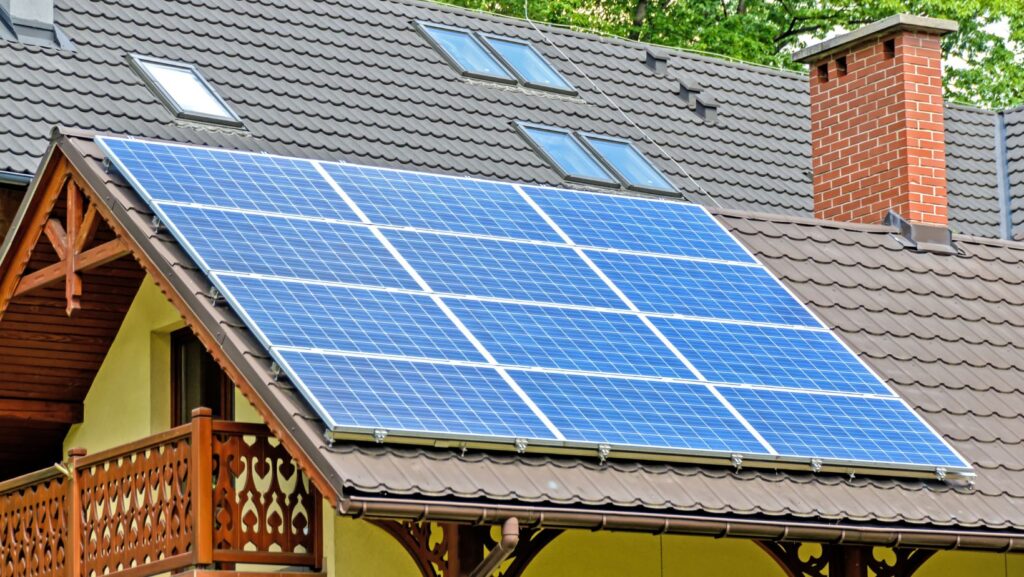
Solar panels have become a symbol of energy independence and sustainability, but on their own, they only tell half the story. To unlock their full potential, homeowners are increasingly combining solar with a whole home battery backup system.
This pairing doesn’t just keep your lights on during outages — it transforms the way your home uses, stores, and manages electricity.
Why Solar Alone Isn’t Enough
Solar panels are designed to capture sunlight and convert it into clean, renewable electricity. During daylight hours, they can generate more energy than your home consumes — which sounds ideal. But there’s a catch: that energy has to go somewhere.
If you don’t have a whole home battery backup, any excess power is typically sent back to the utility grid through a process called net metering. At night or during cloudy days, when your panels aren’t producing, you have to draw electricity back from the grid — often at higher rates.
Even more problematic, when the grid goes down, your solar system automatically shuts off for safety reasons. That means no power, even if the sun is shining.
A whole home battery backup changes this dynamic completely. It captures your unused solar energy and stores it for whenever you need it — at night, during storms, or when utility prices peak.
The Power of Solar + Storage
Pairing solar panels with a whole home battery backup turns your house into a self-sustaining energy hub. The two technologies work in harmony:
- Daytime: Your solar panels generate electricity. The power runs your home first, then charges your battery with any excess.
- Nighttime or Cloudy Hours: The battery discharges stored energy to power your home when solar production slows.
- During an Outage: The system isolates your home from the grid and runs entirely on your solar and stored power.
This smart energy loop provides continuous, clean power while minimizing reliance on your utility company. It’s not just backup energy — it’s full-scale energy management.
Hidden Benefit 1: True Energy Independence
The most obvious advantage of solar-plus-battery systems is resilience, but the deeper benefit is independence.
With a whole home battery backup, you’re no longer fully reliant on utility schedules, grid stability, or fluctuating rates. Instead, your home becomes its own power source — one that generates, stores, and consumes energy on your terms.
This autonomy is especially valuable in states facing grid instability or time-of-use (TOU) pricing, where electricity costs vary throughout the day. Batteries allow you to draw power when rates are lowest and avoid buying during peak hours, reducing your long-term energy costs.
In essence, it gives you control — over both your power and your bills.
Hidden Benefit 2: Power During Blackouts
Grid outages are happening more often across the U.S., from ice storms in Texas to wildfire safety shutoffs in California. Without storage, solar panels can’t help — they automatically stop producing when the grid fails.
A whole home battery backup system solves that. When an outage hits, it disconnects from the grid and powers your home instantly. The transition is seamless — your lights stay on, your fridge keeps running, and your Wi-Fi doesn’t drop.
If your solar panels are charging your batteries during the day, you can extend this backup indefinitely. This setup ensures your home stays comfortable and functional even when the neighborhood goes dark.

Hidden Benefit 3: Financial Savings Beyond the Obvious
It’s easy to see solar as a way to cut energy bills, but adding storage introduces new layers of financial benefit.
- Time-of-Use Optimization:
Many utilities charge higher rates during late afternoon and evening hours. With stored solar energy, you can use your battery during these peak times instead of buying expensive grid electricity. - Net Metering Advantage:
If your state offers limited or declining net metering credits, it’s more profitable to store your extra energy than to sell it back to the grid at reduced rates. - Incentives and Rebates:
Homeowners can take advantage of the 30% Federal Investment Tax Credit (ITC) for both solar panels and whole home battery backup systems. Some states, such as California, New York, and Massachusetts, also offer local rebates and performance-based incentives for installing energy storage. - Future-Proofing Against Rising Rates:
Electricity prices have increased roughly 15–20% in many states over the past five years. By generating and storing your own power, you shield yourself from unpredictable rate hikes.
The combined system doesn’t just pay for itself — it creates long-term stability in an era of volatile energy costs.
Hidden Benefit 4: Cleaner, Quieter Backup Power
Traditional backup generators burn fuel, produce noise, and release harmful emissions. In contrast, whole home battery backup systems are completely silent and emission-free.
That means no exhaust fumes, no gasoline storage, and no middle-of-the-night engine noise during a storm. You can safely install the system indoors, in a garage, or even inside your home’s utility room without ventilation concerns.
For families focused on sustainability or those living in dense neighborhoods, this quiet reliability makes an enormous difference in comfort and peace of mind.
Hidden Benefit 5: Better Use of Your Solar Investment
Many homeowners underestimate how much solar energy goes unused without a storage system. If your panels generate 30 kWh a day but your home only consumes 20 kWh, you’re losing up to one-third of your potential energy savings when that excess goes back to the grid.
By adding a whole home battery backup, you capture that surplus power and use it later — maximizing your return on investment. Every watt you store and reuse increases your system’s efficiency and reduces your payback time.
Think of your battery as an extension of your solar panels. It ensures you use every ounce of power you produce.
Hidden Benefit 6: Smart Energy Management and Monitoring
Modern whole home battery backup systems come with intelligent management software that lets you monitor energy production, consumption, and storage in real time.
Through a mobile app or web dashboard, you can:
- Track how much energy your solar panels are generating.
- See how your home consumes power throughout the day.
- Schedule charging or discharging cycles for maximum efficiency.
- Adjust settings to prioritize certain appliances during an outage.
This kind of data-driven control turns your home into a “smart energy ecosystem,” helping you optimize every kilowatt-hour and reduce waste over time.
Hidden Benefit 7: Increased Property Value
Homes equipped with solar and battery storage systems consistently command higher resale prices. According to multiple real estate studies, energy-efficient homes sell faster and for a premium — often 3–5% more than comparable properties.
Buyers see value not just in lower utility bills but in the added comfort and security of having a whole home battery backup. In regions prone to storms, wildfires, or rolling blackouts, that reliability is a major selling point.
So, even if you plan to move in the future, your investment in solar and storage can pay off twice — in monthly savings and resale value.
Hidden Benefit 8: Contribution to a Cleaner Grid
When you combine solar panels and a whole home battery backup, you’re not just helping yourself — you’re helping your community and the environment.
Stored energy can relieve strain on the grid during peak demand periods, reducing the likelihood of blackouts for everyone. Some utilities even offer programs that allow homeowners to share stored energy back to the grid, rewarding participants with bill credits.
This “distributed energy” model is the future of clean power: millions of homes producing and sharing electricity sustainably. By installing solar and storage now, you’re part of that transformation.
How to Get the Most Out of a Solar + Battery Setup
If you’re ready to maximize your solar potential, keep these points in mind:
- Size Matters: Make sure your solar array and battery capacity match your actual energy use. Oversizing wastes money; undersizing limits performance.
- Plan for Growth: Choose a scalable whole home battery backup that allows future expansion if your energy needs increase.
- Check Incentives: Take advantage of federal, state, and utility rebates before they phase out.
- Work with Certified Installers: Professional design and installation ensure your system operates safely, efficiently, and in compliance with local codes.
The Bigger Picture
Solar energy is powerful, but it’s intermittent. Pairing it with storage transforms that power into a steady, predictable resource — one that protects your home, cuts your costs, and reduces your carbon footprint.
In an age of rising electricity prices and unpredictable weather, the combination of solar and whole home battery backup is more than a smart choice — it’s the new standard for modern living.
Conclusion
Adding a whole home battery backup to your solar system turns clean energy into reliable energy. It protects you during blackouts, maximizes your investment, and gives you control over how and when you use electricity.
The hidden benefits go far beyond savings — they’re about independence, comfort, and a cleaner future powered by your own home.












